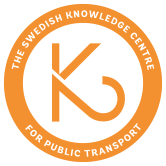Article highlighted
Rådslaget: The next step for sustainable travel requires a broad and bold approach

Rådslaget is a K2 initiative that has involved experts working in public transport, new mobility services and urban development. The initiative has resulted in a report that suggests that public transport should be developed into what is referred to as public mobility, which also includes new shared mobility services.
– In the report, we present several tangible actions that decision-makers can take if they want to speed up the necessary transition to a society with more sustainable travel. These proposals are based on the combined skills, experience, and ideas of over eighty experts, says John Hultén, project manager for Rådslaget and director of K2.
The report states that electrification is needed, but not enough to solve the climate impact of the transportation sector. In addition, electric cars do not solve other societal challenges such as lack of space in cities, poor air quality, public health and raw material shortages.
Crucial to dealing with the challenges is that the new shared mobility services, such as e-scooters and carpools, are connected with the established public transport to form the public mobility of the future. This development should be viewed as a freedom reform, according to the report.
– We need to focus on freedom of choice in ways that increase people’s opportunities for accessibility that is sustainable. We believe that everyone should be able to get around cities, as well as to important places outside cities, within a reasonable time and at a reasonable cost without having to own a vehicle. We need to rethink what people can expect from the transport system – and vice versa, says John Hultén.
The report identifies five areas of particular importance if public mobility is to become reality. These include a redefined role for public transport, changing forms of organisation and funding, new travel habits with more personalised services, reprioritising street space, and pricing and payment strategies for public mobility.
The report calls for a need to appoint a national commission to develop the proposals and identify further measures.
– A commission is needed as the stakeholders that are currently responsible for public transport, new mobility services and urban development, with their existing roles and mandates, are not fully capable of seizing the opportunities, and because there is no national stakeholder with the power to drive change, says John Hultén.
Besides a national commission, the report argues for the need to join forces in a new industry – the public mobility industry – where stakeholders gather around a strategic innovation programme based on the vision of a new social contract for public mobility.
This work requires a mix of skills and a determined commitment from many stakeholders, such as government authorities, regional public transport authorities, transport companies, local authorities, academia, the automotive industry, civil society and the business community in general.
– We learned during the pandemic that society, faced with a crisis, has the ability to find new solutions. Let’s use that insight to develop the public mobility of the future in ways that provide both increased freedom of choice and the conditions for a sustainable society, says John Hultén.
Examples of specific actions
The report suggests a number of specific actions for each of the five focus areas:
- Gradually replace national, regional and local targets for increasing the percentage of walking, cycling and public transport with targets for increasing the percentage of walking, cycling and public mobility. In the long term, replace percentage targets with accessibility targets, i.e. targets for how easily people can select different ways of achieving accessibility
- Revise the base speed for urban traffic in ways that adapt the traffic to urban conditions, rather than the other way around.
- Ensure that public transport tickets can be sold via new channels and by other stakeholders in order to promote new, seamless solutions.
- Initiate a review of the Public Transport Act and make the necessary changes based on a diversified mandate.
- Review the instructions and regulations governing the Swedish Transport Administration’s mandate in ways that give the agency the opportunity to take on a more active role in driving and supporting public mobility.
Read the report in Swedish here (English version coming soon)
